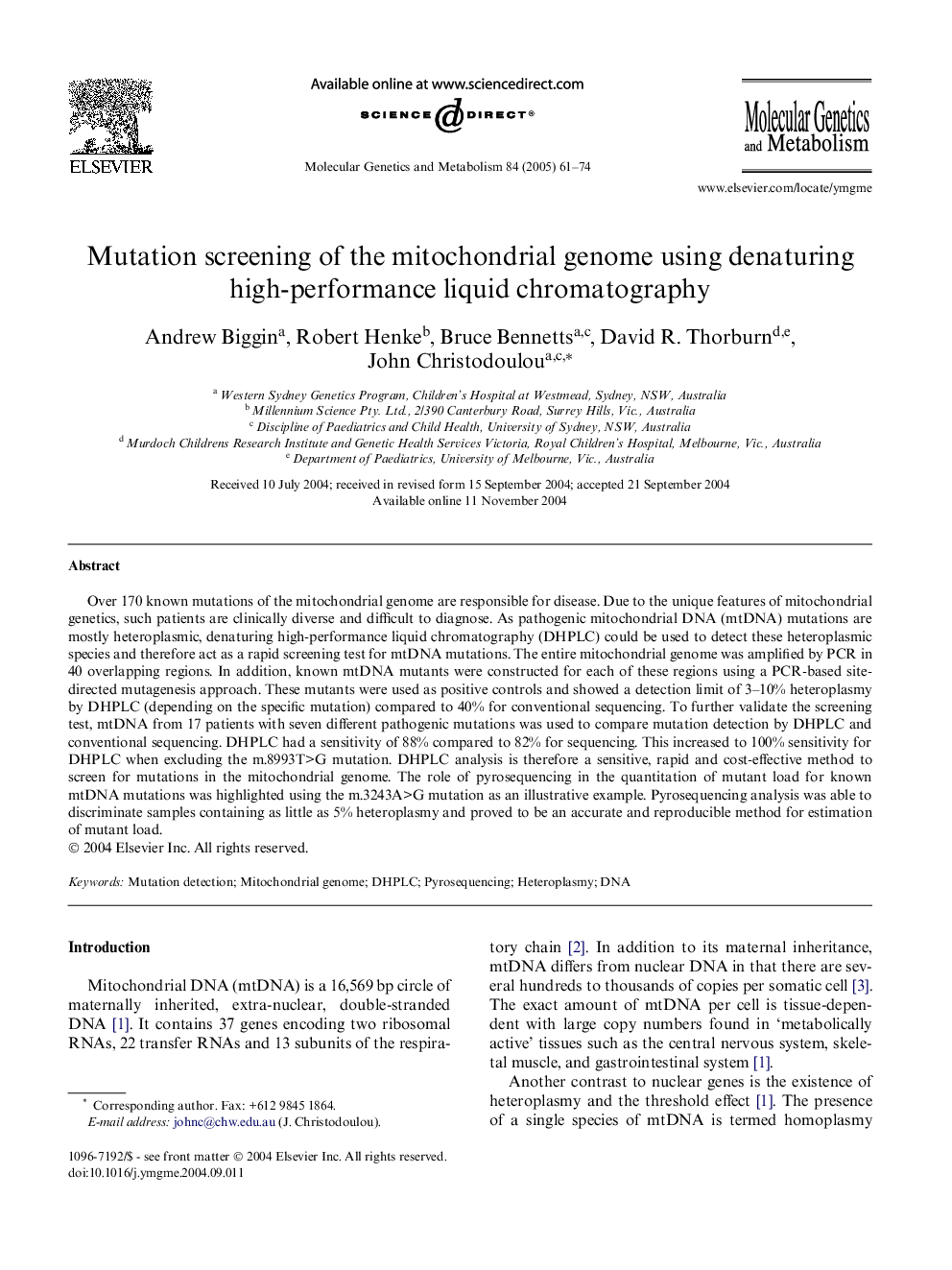| Article ID | Journal | Published Year | Pages | File Type |
|---|---|---|---|---|
| 10834710 | Molecular Genetics and Metabolism | 2005 | 14 Pages |
Abstract
Over 170 known mutations of the mitochondrial genome are responsible for disease. Due to the unique features of mitochondrial genetics, such patients are clinically diverse and difficult to diagnose. As pathogenic mitochondrial DNA (mtDNA) mutations are mostly heteroplasmic, denaturing high-performance liquid chromatography (DHPLC) could be used to detect these heteroplasmic species and therefore act as a rapid screening test for mtDNA mutations. The entire mitochondrial genome was amplified by PCR in 40 overlapping regions. In addition, known mtDNA mutants were constructed for each of these regions using a PCR-based site-directed mutagenesis approach. These mutants were used as positive controls and showed a detection limit of 3-10% heteroplasmy by DHPLC (depending on the specific mutation) compared to 40% for conventional sequencing. To further validate the screening test, mtDNA from 17 patients with seven different pathogenic mutations was used to compare mutation detection by DHPLC and conventional sequencing. DHPLC had a sensitivity of 88% compared to 82% for sequencing. This increased to 100% sensitivity for DHPLC when excluding the m.8993T>G mutation. DHPLC analysis is therefore a sensitive, rapid and cost-effective method to screen for mutations in the mitochondrial genome. The role of pyrosequencing in the quantitation of mutant load for known mtDNA mutations was highlighted using the m.3243A>G mutation as an illustrative example. Pyrosequencing analysis was able to discriminate samples containing as little as 5% heteroplasmy and proved to be an accurate and reproducible method for estimation of mutant load.
Related Topics
Life Sciences
Biochemistry, Genetics and Molecular Biology
Biochemistry
Authors
Andrew Biggin, Robert Henke, Bruce Bennetts, David R. Thorburn, John Christodoulou,
